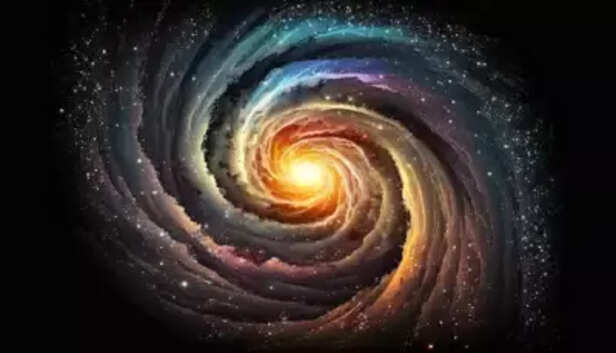Why the Kumbh Mela Happens Every 12 Years and Maha Kumbh Every 144
Riya Kumari | Jan 29, 2025, 16:15 IST
Maha Kumbh
( Image credit : Times Life Bureau )
The Kumbh Mela, held every 12 years, is more than a religious gathering. It is a cosmic reminder of the deep connection between humanity and the universe, an opportunity to awaken to the divine truth that exists within us all. Through its celestial alignment and profound symbolism, the Kumbh Mela offers more than spiritual cleansing—it offers a chance for humanity to realign itself with the greater cosmic order, to renew its understanding of life, and to find its place in the eternal cycle of existence.
The Kumbh Mela is a spiritual event unlike any other, drawing millions of devotees from all corners of the world to the banks of sacred rivers. Its roots go deep into India's ancient traditions, intertwined with celestial occurrences that reveal an intricate connection between time, spirituality, and human existence. But why is it celebrated every 12 years, and what celestial alignment gives this festival its unique rhythm? This article explores the deeper essence of the Kumbh Mela, offering not only an explanation but also a glimpse into the timeless wisdom that guides its very existence.
1. The Mystical Calendar of the Cosmos

At the heart of the Kumbh Mela lies an ancient understanding of celestial cycles. The event is connected to the position of Jupiter (Brihaspati) and the Sun in relation to the zodiac signs. Every 12 years, Jupiter completes a full orbit of the zodiac, creating a rare alignment in which the heavenly bodies’ positions are in perfect harmony with the spiritual needs of the world. This 12-year cycle is not arbitrary; it is a rhythm that resonates with the cosmos, and the event takes place when the cosmic energies are believed to be most auspicious for spiritual awakening.
2. The Symbol of Immortality

The legend behind the Kumbh Mela is rooted in the ancient tale of the churning of the ocean (Samudra Manthan), where gods and demons together stirred the oceans to extract the nectar of immortality (Amrit). As the nectar was being taken, a pot (Kumbh) containing the Amrit was spilled at four sacred locations: Prayag (Allahabad), Haridwar, Nashik, and Ujjain. These locations, now hosting the Kumbh Mela, are seen as the places where divine blessings are concentrated, making them spiritually potent for those seeking liberation.
The number 12, therefore, symbolizes not just time but an eternal cycle of cosmic renewal. The Kumbh Mela, held at these intersections, offers devotees a chance to reconnect with their own divine essence, to cleanse their soul in the river's sacred waters, and to understand their place within the larger universe.
3. The Collective Consciousness

What makes the Kumbh Mela different from any other religious festival is the energy it generates when millions of people come together with a single purpose: to cleanse themselves, both physically and spiritually. The sheer number of people, the diversity of backgrounds, and the shared devotion create a powerful collective consciousness that transcends individual lives and touches the divine.
This shared experience is not merely a pilgrimage; it is a profound awakening. As the rivers wash away sins, the collective spirit of the gathering has the potential to purify the world itself. It is a time when human aspirations and cosmic realities come into alignment, offering a moment of universal transformation.
4. Why Every 12 Years?

The answer lies not only in the celestial alignment but in the profound connection between the human spirit and the passage of time. In the spiritual traditions of India, 12 is considered a sacred number. It marks a full cycle of time in many ways, representing completeness, wholeness, and renewal. Holding the Kumbh Mela every 12 years emphasizes this cyclical nature of time, aligning the spiritual journey of individuals with the natural world.
This 12-year interval also gives devotees a chance to reflect on their personal growth and transformation. It acts as a spiritual check-in—a way to measure where one is on their journey and what they need to shed in order to move forward. It’s a moment to understand the impermanence of time, yet recognize the eternal presence that lies beyond it.
5. The Impact Beyond the Ritual

The Kumbh Mela is more than just an event for personal salvation. It is a moment when spiritual wisdom reaches beyond borders, cultures, and ideologies. It encourages individuals to step away from the chaos of modern life, reconnect with nature, and rediscover the values that have been passed down for millennia.
In our fast-paced world, where the digital and material often overshadow the spiritual, the Kumbh Mela offers a much-needed pause—a reminder of the timeless truths that govern not just our lives but the entire universe. It asks us to consider: Are we in tune with the universe, or have we lost our connection to the eternal rhythm?
6. The Rare Mahakumbh: Why Every 144 Years?

The timing of the Mahakumbh is tied to a unique celestial alignment, where the orbits of Jupiter and the Sun create a rare confluence that amplifies the event's spiritual power. The 144-year interval is symbolic of an extraordinary cosmic cycle—one that reflects the long-term rhythm of time itself. It is seen as a period of cosmic renewal, where the energies of the universe are believed to reach their peak, offering unparalleled opportunities for spiritual awakening and liberation. The Mahakumbh serves as a reminder that not all divine opportunities are frequent, and some are reserved for those who patiently await them, recognizing the deeper patterns of existence.
1. The Mystical Calendar of the Cosmos

Jupiter
( Image credit : Times Life Bureau )
At the heart of the Kumbh Mela lies an ancient understanding of celestial cycles. The event is connected to the position of Jupiter (Brihaspati) and the Sun in relation to the zodiac signs. Every 12 years, Jupiter completes a full orbit of the zodiac, creating a rare alignment in which the heavenly bodies’ positions are in perfect harmony with the spiritual needs of the world. This 12-year cycle is not arbitrary; it is a rhythm that resonates with the cosmos, and the event takes place when the cosmic energies are believed to be most auspicious for spiritual awakening.
2. The Symbol of Immortality

Kumbh
( Image credit : Times Life Bureau )
The legend behind the Kumbh Mela is rooted in the ancient tale of the churning of the ocean (Samudra Manthan), where gods and demons together stirred the oceans to extract the nectar of immortality (Amrit). As the nectar was being taken, a pot (Kumbh) containing the Amrit was spilled at four sacred locations: Prayag (Allahabad), Haridwar, Nashik, and Ujjain. These locations, now hosting the Kumbh Mela, are seen as the places where divine blessings are concentrated, making them spiritually potent for those seeking liberation.
The number 12, therefore, symbolizes not just time but an eternal cycle of cosmic renewal. The Kumbh Mela, held at these intersections, offers devotees a chance to reconnect with their own divine essence, to cleanse their soul in the river's sacred waters, and to understand their place within the larger universe.
3. The Collective Consciousness

Kumbh mela
( Image credit : Times Life Bureau )
What makes the Kumbh Mela different from any other religious festival is the energy it generates when millions of people come together with a single purpose: to cleanse themselves, both physically and spiritually. The sheer number of people, the diversity of backgrounds, and the shared devotion create a powerful collective consciousness that transcends individual lives and touches the divine.
This shared experience is not merely a pilgrimage; it is a profound awakening. As the rivers wash away sins, the collective spirit of the gathering has the potential to purify the world itself. It is a time when human aspirations and cosmic realities come into alignment, offering a moment of universal transformation.
4. Why Every 12 Years?

Renewal
( Image credit : Times Life Bureau )
The answer lies not only in the celestial alignment but in the profound connection between the human spirit and the passage of time. In the spiritual traditions of India, 12 is considered a sacred number. It marks a full cycle of time in many ways, representing completeness, wholeness, and renewal. Holding the Kumbh Mela every 12 years emphasizes this cyclical nature of time, aligning the spiritual journey of individuals with the natural world.
This 12-year interval also gives devotees a chance to reflect on their personal growth and transformation. It acts as a spiritual check-in—a way to measure where one is on their journey and what they need to shed in order to move forward. It’s a moment to understand the impermanence of time, yet recognize the eternal presence that lies beyond it.
5. The Impact Beyond the Ritual

Universe
( Image credit : Times Life Bureau )
The Kumbh Mela is more than just an event for personal salvation. It is a moment when spiritual wisdom reaches beyond borders, cultures, and ideologies. It encourages individuals to step away from the chaos of modern life, reconnect with nature, and rediscover the values that have been passed down for millennia.
In our fast-paced world, where the digital and material often overshadow the spiritual, the Kumbh Mela offers a much-needed pause—a reminder of the timeless truths that govern not just our lives but the entire universe. It asks us to consider: Are we in tune with the universe, or have we lost our connection to the eternal rhythm?
6. The Rare Mahakumbh: Why Every 144 Years?

Maha Kumbh
( Image credit : Times Life Bureau )
The timing of the Mahakumbh is tied to a unique celestial alignment, where the orbits of Jupiter and the Sun create a rare confluence that amplifies the event's spiritual power. The 144-year interval is symbolic of an extraordinary cosmic cycle—one that reflects the long-term rhythm of time itself. It is seen as a period of cosmic renewal, where the energies of the universe are believed to reach their peak, offering unparalleled opportunities for spiritual awakening and liberation. The Mahakumbh serves as a reminder that not all divine opportunities are frequent, and some are reserved for those who patiently await them, recognizing the deeper patterns of existence.
